




Every cow in your herd is an investment. And the longer she stays healthy, breeds back and puts milk in the tank, the greater your return. That’s what selection on the ICC™ index does – and the proof is in the numbers. www.genex.coop/icc
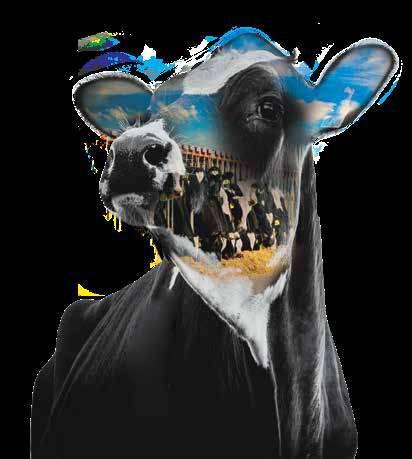
By choosing sires using the ICC™ index, you are ensuring each new generation of cows is more fertile, more efficient and more profitable than the last. With the updated formula and real-world validation from 30,000 cows in progressive U.S. herds, the ICC™ index delivers genetics that work harder for you.

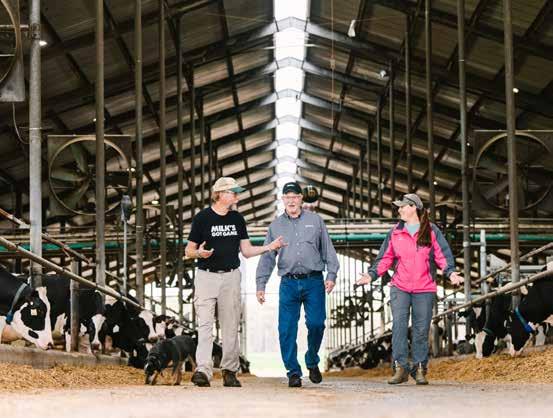
1HO15461
1HO16361
1HO16537 LOCKSTEP

This decade-long recognition program evaluates nominated herds based on cow and heifer reproduction as well as genetic information. Farms from across the globe compete in one of four categories based on size or location.
< 1,000 Cows
Farms New York
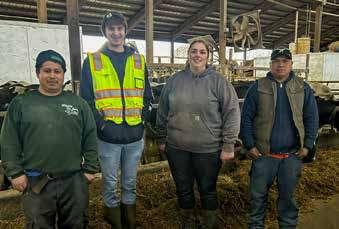
“The GENEX team works closely with Landmark Farms staff and herd veterinarian to ensure reproductive success. We maintain consistent and clear communication in order to adjust breeding strategies, talk about farm updates and continue to improve results.”

Cat Thrasher GENEX Key Account Manager
1,000-3,000 Cows
Mar-Bec Dairy Wisconsin
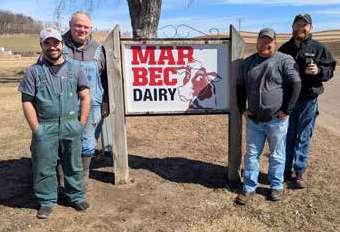
“Marty and Becky are first generation farmers, true examples of an American success story. They built this farm to what it is today by always doing what is best for the cows. The farm’s emphasis is on top genetics paired with outstanding cow comfort. At the heart of the dairy are the people.”

Pete Weber GENEX National Account Manager
< 1,000 Cows Landmark Farms Blue Prairie Holsteins
1,000-3,000 Cows Mar-Bec Dairy Scheps Dairy
>3,000 Cows Dollymount Dairy LLP & Coronado Heifer Yard Riverview LLP Pleasant View Farm
International Soc. Arg. Cervi Ciboldi Kilachevskiy
> 3,000 Cows International
Dollymount Dairy LLP & Coronado Heifer Yard Riverview LLP Minnesota & Arizona
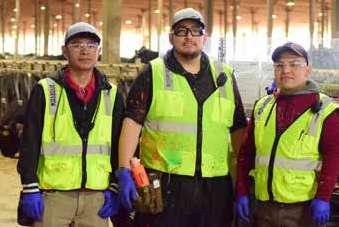
“The determination of the Coronado team shines through their impressive results, proving that consistency and teamwork truly make the dream work! They really see the importance of reproduction and are always looking to go beyond.”

Paula Molinari GENEX Key Account Manager
Soc. Arg. Cervi Ciboldi Italy
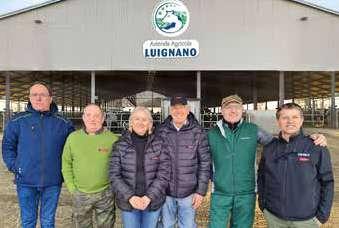
“Cervi Ciboldi deserves recognition for the total dedication and commitment of their Herd Manager, Luigi Baselli. His attention to detail in every aspect of herd management is outstanding. Additionally, he has a fantastic relationship with the owners and works with the entire team to achieve results.”

David Ellis GENEX Progressive Herd Consultant

Scan to learn more about the winners and this prestigious award.























































































































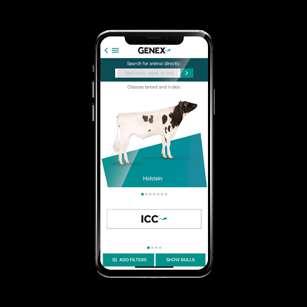









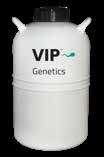







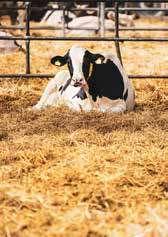

Calving doesn’t have to mean stress, setbacks or scrambling to get your fresh cows back on track.
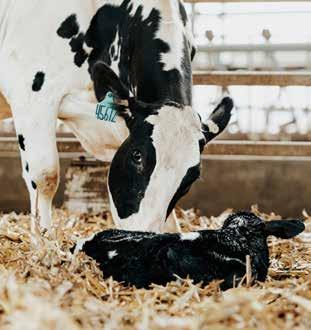
Down cows
Delayed recovery
Increased health events
Increased costs, lower returns
Calving chaos
With RumiLife® CAL24™
Smooth transitions with full calcium coverage
Increased performance & productivity
Fewer health events
Peace of mind
Less drama for mama
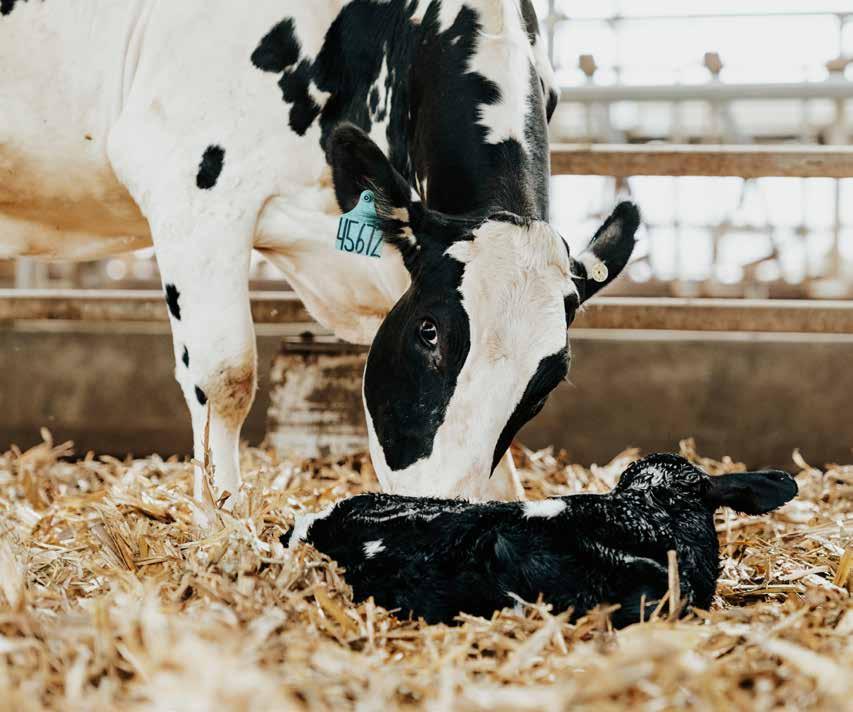
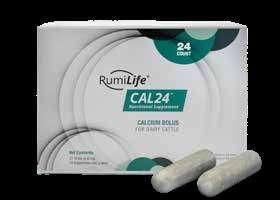
Two boluses. One smooth start to lactation.
ICC
ICC for Holsteins is the combination of three sub-indexes: 53% Production Efficiency (PREF), 34% Sustainability (SUST) and 13% Fertility (FERT).
ICC for Jerseys and Mixed Breed sires is the combination of three sub-indexes: 46% Cheese Maximizer (ChMAX), 36% Sustainability (SUST) and 18% Fertility (FERT).
Lifetime Net Merit $ (NM$)
Calculated by the Council on Dairy Cattle Breeding (CDCB) and measures net profit over the lifetime of a bull’s average daughter.
Lifetime Cheese Merit $ (CM$)
Designed for producers who sell milk in a cheese market and value high protein premiums. Calculated by the CDCB and combines the same traits as the NM$ index.
Reliability (Rel)
A measure of the amount of information in a trait. Reliability is expressed as a percentage, ranging from 1 to 99. The closer the reliability is to 99, the more reliable the proof.
Daughters
The number of daughters included in the bull’s milk proof.
Herds
The number of different herds a bull’s daughters are located in (considering daughters which are included in the bull’s milk proof).
PTA Milk
Predicted Transmitting Ability (PTA) for milk production in pounds, reflecting the expected milk production of future mature daughters.
PTA Fat Pounds
PTA for butterfat in pounds, reflecting the expected butterfat production of future mature daughters.
PTA Fat Percent
Indicates the genetic variance of a bull’s PTA for transmitting fat as being positive or negative.
PTA Protein Pounds
PTA for protein production in pounds, reflecting the expected production of future mature daughters.
PTA Protein Percent
Indicates the genetic variance of a bull’s PTA for transmitting protein as being positive or negative.
Combined Fat and Protein (CFP)
The sum of PTA Fat pounds and PTA Protein pounds.
PTA Feed Saved (FSAV)
Represents the expected pounds of feed saved per lactation based on Body Weight Composite and Residual Feed Intake evaluations. Larger, positive values are more favorable.
RobotX™
GENEX composite value focused on genetics for easy milking. A value of 100 is considered average with higher numbers being more desirable.
PTA Productive Life
A measure of the expected longevity of a bull’s average daughters, measured in months.
Daughter Pregnancy Rate (DPR)
Percentage of nonpregnant cows that become pregnant during each 21-day period. A DPR of 1.0 implies daughters from this bull are 1.0% more likely to become pregnant during that estrous cycle than a bull with an evaluation at zero.
PTA Somatic Cell Score (SCS)
The PTA for SCS is used to improve mastitis resistance. Bulls with lower SCS values are expected to have daughters with better mastitis resistance.
PTA Livability (LIV)
Predicts cow’s transmitting ability to remain alive while in the milking herd.
PTA Heifer Livability (HLIV)
The expected livability percentage of a bull’s female offspring from 2 days after birth up to 18 months of age in a herd with average management conditions. Larger, positive values are more favorable.
PTA Gestation Length (GL)
Shows the influence each service sire is expected to have on the number of days his mates carry their calves during pregnancy.
Modern Udder Index (MUI)
MUI, calculated by PEAK from Holstein type traits, is a modern strategy to breed for modern udders. MUI promotes lifetime production and longevity without making larger cows. MUI effectively yields a “happy medium” for parlor traits like teat placement and length, maintains center support while delivering steady progress in fore and rear udders.
PTA Type (PTAT)
An estimate of the genetic superiority for conformation that a bull will transmit to its offspring.
Udder Composite (UDC)
An index calculated by Holstein Association USA that is a measure of a bull’s ability for udder improvement.
Feet and Legs Composite (FLC)
An index calculated by Holstein Association USA that is a measure of a bull’s ability for foot and leg improvement.
TPI® (Total Performance Index®)
A breed index calculated by Holstein Association USA.
Jersey Performance Index™ (JPI™ or URPI)
A breed index calculated by the American Jersey Cattle Association (AJCA).
Jersey Udder Index™ (JUI™ or URUI)
An index based on ability for udder improvement, calculated by the AJCA.
Sire Calving Ease
Percentage of Estimated Difficult Births in Heifers (EDBH) when they calve for the first time.
Early First Calving (EFC)
Defined as age in days at first calving. Animals expected to transmit genetics that decrease the age at first calving have a positive EFC value, because calving younger is seen as more beneficial.
Sire Fertility (SCR)
Sire Conception Rate or SCR is the difference of the conception rate of a sire expressed as a percent comparison. SCR is based on conception rate and includes data on multiple services per lactation (up to 7). A SCR of +1.2 means the bull is 1.2% above averages.
PregCheck™ fertility rankings
PregCheck™ rankings are a measure of an individual sire’s frozen semen conception rate and are based on actual breeding and pregnancy data. The ranking is set to a base of 100, meaning 100 is average. Every one-point difference is equivalent to a 1% difference in conception rate.
PregCheck+™ fertility rankings
PregCheck+™ rankings measure the conception ability of a bull’s GenChoice™ sexed semen. These evaluations are provided by GENEX and calculated based on internal data. The ranking is set to a base of 100, meaning 100 is average. Every one-point difference is equivalent to a 1% difference in conception rate.
Heifer Conception Rate (HCR)
Percentage of inseminated virgin heifers that become pregnant. A bull with an evaluation of 1.0 would have daughters that as heifers would be 1% more likely to become pregnant. Services are only included if the heifer is at least 12 months old and less than 2.2 years.
Cow Conception Rate (CCR)
Lactating cow’s ability to conceive based on the percentage of cows inseminated that become pregnant. If a bull’s CCR is 1.0, his daughters would be 1% more likely to become pregnant during that lactation than a bull with an evaluation of zero.
Zoetis Wellness Indexes
Dairy Wellness Profit Index® (DWP$®), Wellness Trait Index (WT$ ) and Calf Wellness Index (CW$ ) are sourced from Zoetis.
Beta-Casein
A major casein protein making up 30% of total milk protein. Variations include A1A1, A1A2, A2A2.
Kappa-Casein (cheese production)
Variants A, B and E are associated with milk protein and quality. Variant combinations are related to the processing of cheese.
Linear Type Traits
Genetic evaluations for the 18 linear type traits are expressed as Standard Transmitting Abilities (STAs).
Genetic Base
The genetic base for the evaluations represents the average of cows born in 2020.
The genetic evaluations contained within this report, unless otherwise noted, are provided by the Council on Dairy Cattle Breeding as the steward of the National Cooperator Database. The National Cooperator Database houses producer-owned yield, management, ancestry, type, and genotype data for the use in genetic evaluations and independent research. Data included in the National Cooperator Database is submitted through certified organizations for data quality and integrity. As such, individual traits - along with Lifetime Net Merit $, Cheese Merit $, Fluid Merit $, and Grazing Merit $ – are Powered by CDCB, unless otherwise noted such as Holstein type traits.
For more information about evaluations Powered by CDCB and the industry collaboration that fuels them, visit www.uscdcb.com/cdcb-marks

